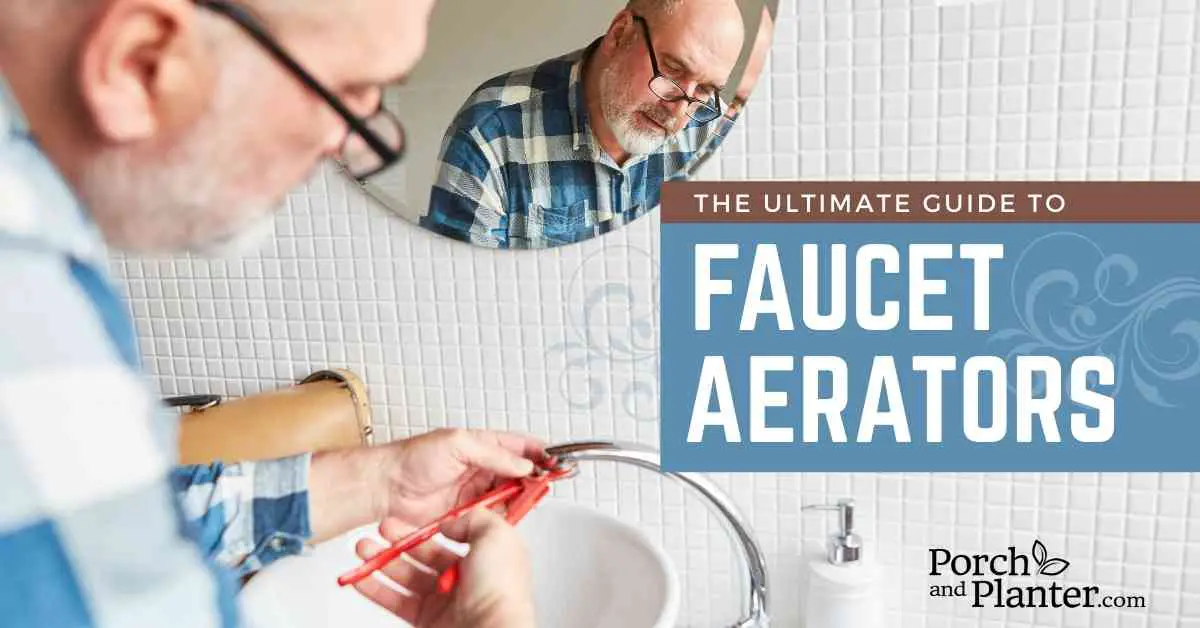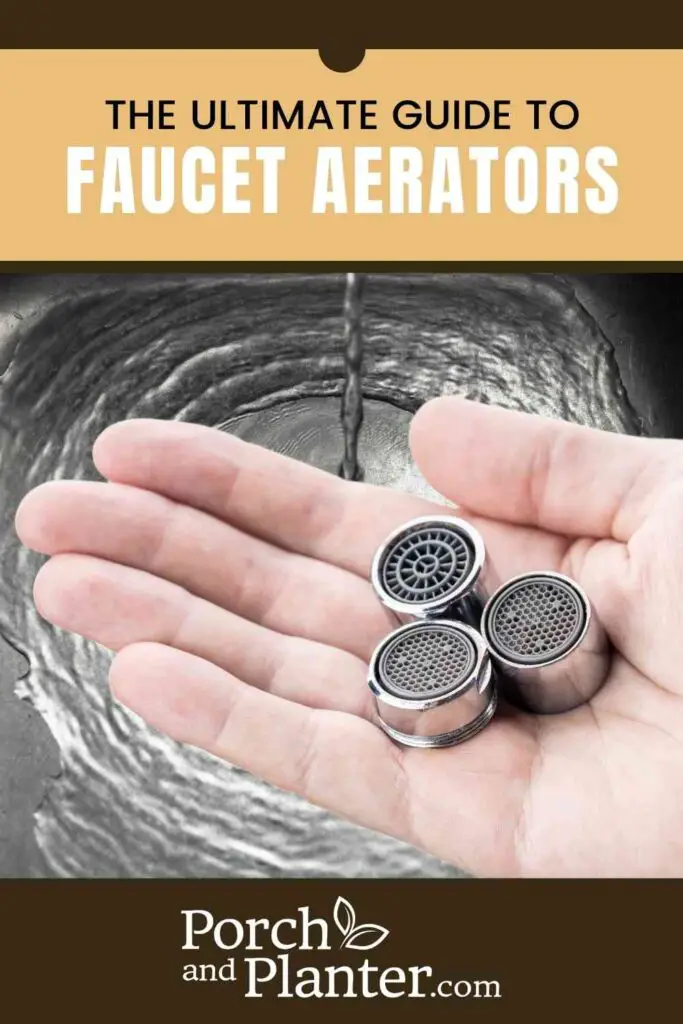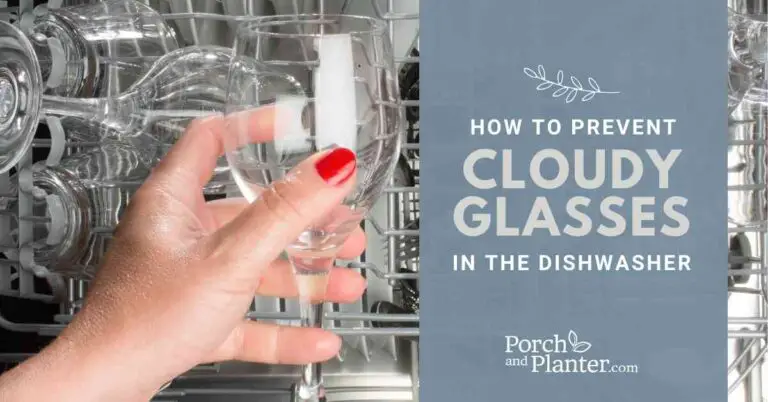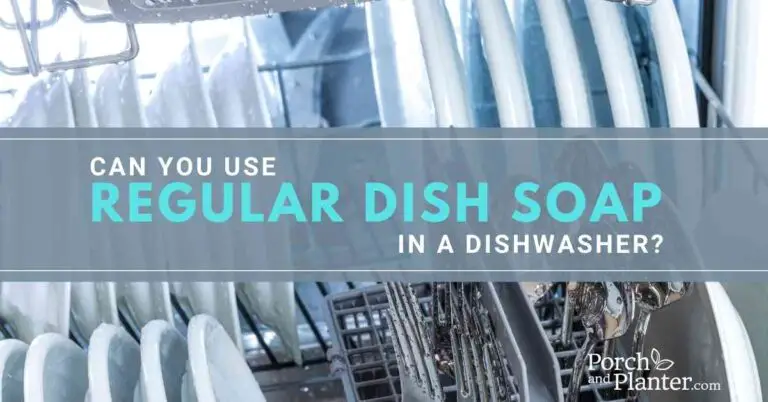The Ultimate Guide to Faucet Aerators

Are faucet aerators necessary? That is a question many people ask themselves when looking for new faucets or ways to save money. In this article, we will cover what you need to know about faucet aerators!
What Is a Faucet Aerator?
A faucet aerator is a small disk of metal mesh that is installed on the faucet to reduce water usage. The mesh of the faucet aerator introduces small bubbles of air into the stream of water coming out of the faucet, “aerating” the water. This metal mesh usually comes on a threaded insert housing you can screw right onto your faucet.
Some faucet aerators also come with a flow restrictor – a small metal or plastic disk with a hole in it to reduce the size of the opening for the water to flow through. Reducing the size of the opening means less water will flow out.
Most modern kitchen and bathroom faucets come with aerators pre-installed. You can buy aerators separately as well however to replace your current aerator or for use on a faucet that didn’t come with one.
Why Would Someone Want a Faucet Aerator?
Faucet aerators have a ton of benefits. They are not only good for the planet because you use less water, but they can also save you a lot of money on your water bills over the lifetime of the aerator.
- Saves water by reducing the flow and filling it with bubbles
- Reduces the splashing of water in the sink basin
- Softer feeling when the water hits your skin
- Creates a slightly wider stream of water
Is a Faucet Aerator Necessary?
No, a faucet aerator is not 100% necessary on every faucet, and not having an aerator will not impede the faucet’s function. In fact, for certain types of taps like the exterior water taps you hook your garden hose up to or bathtub faucets, you’ll get much better performance if you do not use an aerator. However, we recommend that you have an aerator on your kitchen and bathroom faucets to save water.
Are Faucet Aerators Universal?
No, faucet aerators are not universal. There are actually two main types of faucet aerators: standard aerators and hidden aerators. You need to get the right type for your faucet.
Types of Faucet Aerators
There are two main types of aerators for faucets: hidden aerators and standard aerators.
Hidden Aerators
Hidden aerators are great because they’re just that – hidden – and won’t affect the aesthetic of your faucet and sink. They can’t be installed on every type of faucet, however, as your faucet has to be designed to use them. Many modern kitchen faucets made by companies like Delta and Moen feature hidden aerators.
One thing to keep in mind with hidden aerators is that they require a special tool called a hidden aerator key to put on and remove. These keys come in different sizes depending on the size of the spout the aerator they fit was designed for. You can usually purchase a pack of these keys in various sizes for under $10 if the new aerator you are buying doesn’t come with one. (You can also 3d print your own!)
Standard Aerators
Standard aerators attach over your existing faucet spout and are great for older faucets that didn’t already come with an aerator or for upgrading to more water-efficient aerators on faucets that don’t use hidden aerators
While many kitchen and bathroom faucets have come with aerators for the past few decades, many of the older ones aren’t as efficient as they could be, so attaching a new standard-style aerator to them can greatly increase your water savings.
How To Install or Replace Your Standard Faucet Aerator
Installing an aerator on a faucet that doesn’t have one or replacing your existing aerator is actually really easy. The majority of the time, you won’t even need any tools, however, if your current aerator or the end of your faucet spout is really tight, you might need a pair of grooved pliers and a dish towel to safely remove it.
Important: Before you start, cover or close the drain in your sink, that way if you drop a part while installing your aerator, it doesn’t fall down the drain.
- Remove the current end of the faucet spout by turning it to the right. You should be able to unscrew it by hand. If it’s stuck, cover it with your dish towel and use your wrench to clamp around it so you can remove it without scratching the part or your faucet.
- Check the inside of the faucet spout to ensure that no parts are still stuck inside. Then wipe the inside of the spout clean with the dish towel.
- Check your new aerator to ensure that everything is fully assembled and the rubber washer is in place. This washer is especially important because it will prevent leaks.
- Insert the aerator into the faucet spout until the threads catch and turn it to the right with your hands until it is firmly in place. You could do some additional tightening by wrapping the dishcloth around the aerator and using the wrench to tighten it, but too much force will risk stripping the threads on your faucet and aerator.
- Turn on your faucet to test the aerator.
Congratulations on installing your standard faucet aerator!
How To Install or Replace Your Hidden Faucet Aerator
- Remove your current hidden aerator using an appropriately sized aerator key by lining up the teeth and turning it to the right.
- Check the inside of the faucet spout to ensure that no parts are still stuck inside. Then wipe the inside of the spout clean with the dishtowel.
- Check your new aerator to ensure that everything is fully assembled and the rubber washer is in place. This washer is especially important because it will prevent leaks.
- Insert your new hidden aerator into the faucet and tighten it using the key.
Do You Need to Clean a Faucet Aerator?
Yes, it’s important to clean your faucet aerator regularly, or the buildup of minerals from your water will hamper its performance.
How Often Should You Clean a Faucet Aerator?
You should clean your faucet aerator every 6 months to prevent too much dirt and grime from accumulating in it.
How to Clean a Faucet Aerator
You should be able to clean your faucet aerator with vinegar, baking soda, and a toothbrush. You can also use an old toothbrush for cleaning your aerator if you don’t have a new one handy (just make sure to clean the toothbrush first). It’s important to clean out the inside of your faucet aerator regularly because it attracts bacteria and gunk that could clog your aerator. Make sure to dry it thoroughly before re-installing it.
- Remove the aerator from your faucet.
- Soak the aerator in white vinegar mixed with baking soda for 10 minutes to remove any mineral buildup. (Now’s a good time to scrub the rest of the faucet and sink while it soaks.)
- Scrub off the vinegar with a dishcloth or an old toothbrush and rinse thoroughly with water.
- Reinstall your freshly cleaned aerator!


![Is It Worth It to Replace a Refrigerator Compressor? [ANSWERED]](https://porchandplanter.com/wp-content/uploads/2021/09/worth-it-to-replace-refrigerator-compressor-768x402.jpg)




